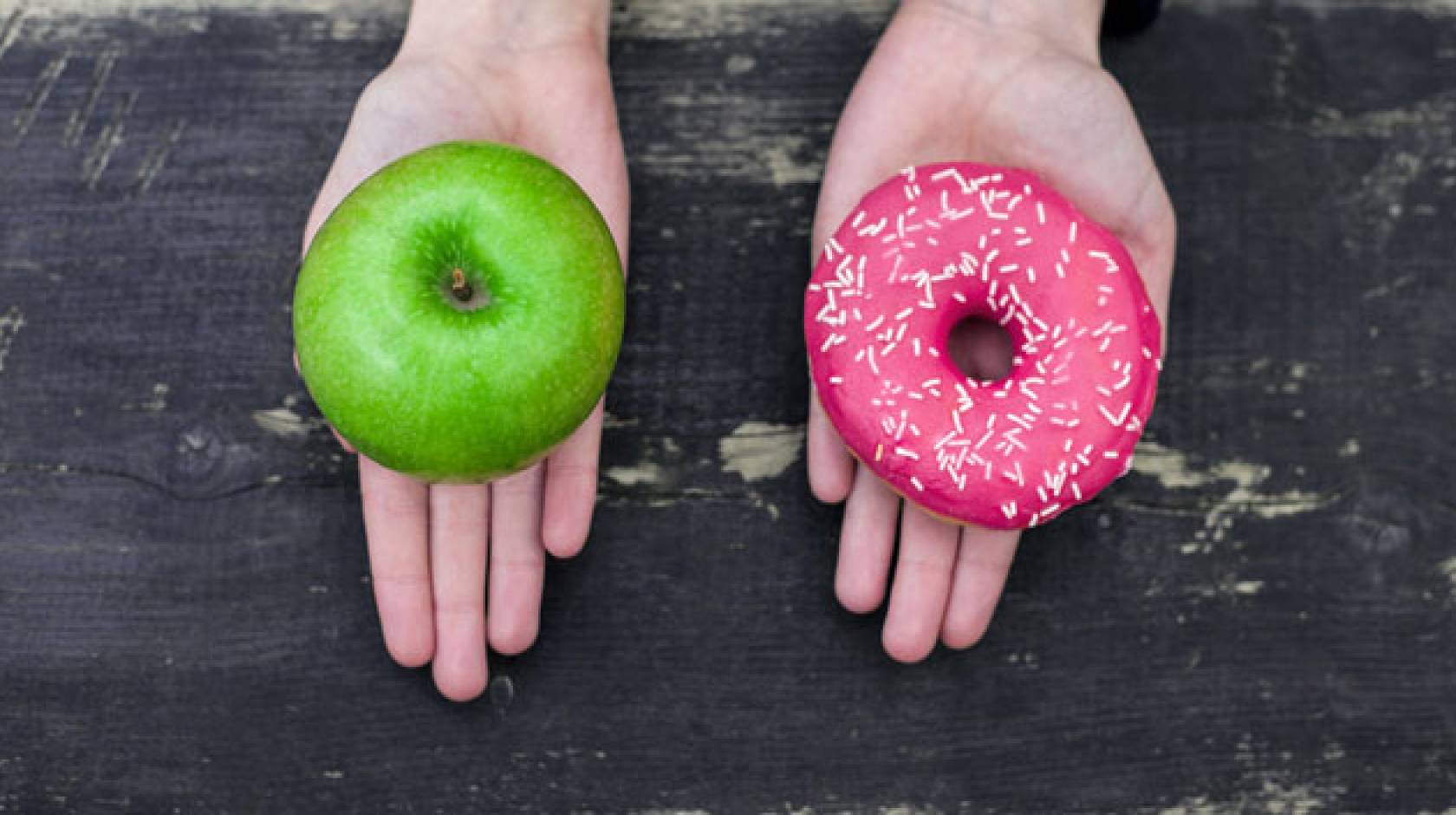Alec Rosenberg, UC Newsroom

Do you find yourself craving ice cream, intoxicated by an image of french fries or unable to resist the candy jar at a co-worker’s desk?
Research shows you’re not alone. Certain foods — particularly processed foods that are high in sugar, salt and fat — don’t just taste good, they also can be addictive, said scientists at a UC San Francisco symposium on food and addiction.
Food addiction is still a controversial concept in the scientific community. But researchers find strong evidence that certain foods can trigger binging, craving and withdrawal, responses that are similar to those produced by addictive substances like alcohol, cocaine and tobacco.
“I don’t think sugar is more addicting than cocaine, but I do think sugar is addicting,” said addiction expert Mark Gold, co-editor of the book “Food and Addiction” and keynote speaker at UCSF’s Oct. 27 Sugar, Stress, Environment, and Weight Symposium.
Take heart, consumers. As with other addictive substances, you can break free of your cravings. Follow these tips from experts to cut down on sugar and break your junk food habit:
- Identify your triggers: Awareness is an important first step. Pay attention to those moments when your cravings start so you can figure out what unleashed them. “You have to work to control the triggers as soon as possible,” said Kerri Boutelle, a UC San Diego professor of pediatrics and psychology who conducts clinical trials with kids and adults who are overweight and obese and have eating disorders.
- Teach yourself to tolerate cravings: “Sugar cravings are a learned response,” Boutelle said. People can be trained to extinguish that response and ride out their cravings, once they realize that those urges diminish over time. Cravings might last 10 minutes, she said. Her research has found that people can gain more control over their favorite foods by looking at, smelling and only taking a small taste of them.
- Plan your meals: If you already have a healthy meal prepared, that will help you avoid unhealthy choices. Try to follow the new federal dietary guidelines, which recommend a “healthy eating pattern” with limited added sugar and saturated fat, less salt, and more fruits, vegetables and whole grains. “Not all foods are created equally,” said Ashley Gearhardt, assistant professor of clinical psychology at the University of Michigan, who co-developed the Yale Food Addiction Scale to help identify people at high risk for food addiction. “You don’t see people binging on apples.”
- Replace addictive foods with foods you like but don’t struggle with: “We need food to survive,” Gearhardt said. “You should enjoy eating. You’re not going to stick to a diet of gruel and broccoli.”
- Limit children’s early exposure: Kids may be more prone to addiction than adults, so parents should limit their exposure to products with added sugar in their first years of life. Gearhardt, who developed a Yale Food Addiction Scale for children, found that 7 percent of kids meet the diagnosis for food addiction. “This might be setting them up for lifelong problems with eating,” Gearhardt said.
- Reduce your intake of added sugar: Starting in 2018, the new Nutrition Facts label for packaged foods in the U.S. will help consumers by listing how much added sugar is in a product. “The average amount of added sugar in the American diet is more than 20 teaspoons per day,” said Pat Crawford, senior director of research for UC’s Nutrition Policy Institute. “Since about half of this sugar comes in the form of beverages, we have to rethink our beverage choices. Water should be the beverage of choice.”
- Manage your stress: Under stress, people commonly turn to comfort foods high in sugar and fat. Highly stressed people who eat a lot of high-sugar, high-fat food also are more prone to health risks than low-stress people who eat the same amount of unhealthy food. “Stress changes how we metabolize food,” said Elissa Epel, director of the UCSF Center for Obesity Assessment, Study, and Treatment and co-organizer of the food and addiction symposium. To counter those effects, eat mindfully, meditate and exercise, she said. “Exercise is a huge stressbuster,” Epel said.
- Give yourself a break: Don’t judge yourself too harshly for occasional junk food lapses. If you take an all-or-nothing approach, you can feel even more hopeless after giving in to your cravings. Food cues are strong and can be difficult to avoid, and it takes time to learn your triggers and get better at making healthy choices. If you have a “learning lapse,” try to do better next time. “You put chocolate chip cookies in the office at 3 p.m. and nobody can resist them,” said Kimber Stanhope, associate research nutritional biologist at UC Davis.
Credit: University of California
The good news is that the growing spotlight on sugar and food addiction is helping drive changes in public policy that could make it easier for everyone to make healthy food choices. The new nutrition labels are a good example. And with diabetes and obesity reaching epidemic levels in the U.S. and around the world, more changes are likely:
- Taxes: Berkeley passed the nation’s first soda tax in 2014 and three other Bay Area cities have soda tax measures on the November ballot. A new UC Berkeley study shows a 21 percent drop in the drinking of soda and other sugary beverages in Berkeley’s low-income neighborhoods after the city levied a penny-per-ounce tax on sugar-sweetened beverages.
- Law: As food addiction science advances, changes in law could follow, said Michael Roberts, executive director of the UCLA Resnick Program for Food Law and Policy and a UC Global Food Initiative subcommittee member. So many food-related lawsuits already have been filed in California that it is known as “The Food Court,” he said.
- Regulation: Sugar is toxic in current doses and should be regulated by the federal government, said UCSF professor of pediatrics Robert Lustig, whose video “Sugar: The Bitter Truth” has more than 6 million views.
- Public perception: “It’s not just about regulation,” said UCSF professor of pediatrics David Kessler, who pushed to regulate tobacco while commissioner of the Food and Drug Administration. “It’s how we perceive things. It’s much more effective than any regulation.” As with tobacco, the public perception could change on sugar. “You used to think smoking was very glamorous,” Kessler said.
- Industry: Manufacturers are under pressure to create products with lower levels of added sugar. “We’re going to see some big shifts in the marketplace with products lower in sugars such as cereals, yogurts, spaghetti sauces and beverages,” Crawford said.
- Research: Scientists want to find out more about the relationship between food and addiction, from causes to treatments. “We’re still in the midst of this obesity and diabetes epidemic,” Epel said. “We cannot ignore food addiction if we want to understand this epidemic.”
- Environment: The food environment has changed over the past 40 years, with the rise in processed foods. Alternatives are emerging. Informed by its SugarScience research and education initiative, UCSF has phased out the sale of sugar-sweetened beverages across its campus, and other institutions are following suit. “We need to work together,” said Laura Schmidt, UCSF professor of health policy, lead SugarScience investigator and UC Global Food Initiative subcommittee member. “The stakes are high.”
Credit: Fig. 1 by University of California

